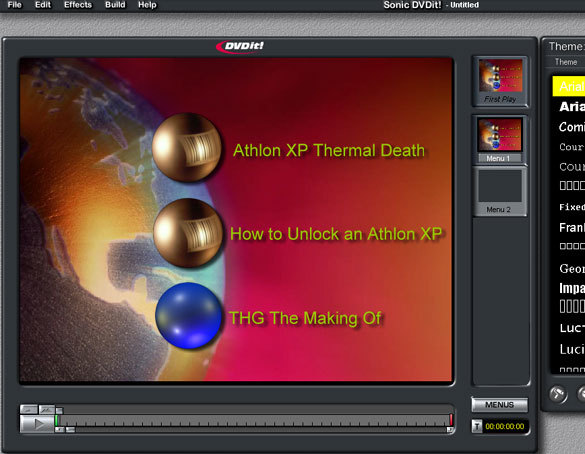Digital Video Editing: The Canopus DVRaptor-RT
Authoring With DVDit!
MPEG-2 videos can also be burned onto a DVD, which offers more storage space than the other option, a CD blank. Included with the software package, DVDit! SE 2.3 enables you to create professional-looking menus that appear on the screen when you pop a burned DVD into your DVD player. Above is an example of what such a menu might look like.
Conclusion: Excellent Value
The video-editing system Canopus DVRaptor-RT was designed with hobbyists and semi-professional filmmakers in mind. Users are given excellent value for $599, assuming that their PC platforms are based on a processor clocked at speeds of over 1600 MHz. Our tests showed that slower processors impede this product's ease of use because many of the so-called "real-time" effects require you to have a powerful CPU. And although you still have to render some filters, we at THG consider the overall timeframe to be within acceptable limits. This also reveals the main difference between the DVRaptor-RT and the Matrox RT2500. The Matrox hardware supports a considerably larger number of filters and effects, allowing it to work more smoothly with slower CPUs. That said, PC systems that run at 1600 MHz and higher can be had for a song compared to last year's prices. Products such as the DVRaptor-RT are at the threshold to a new renaissance.
The card comes bundled with a slew of plug-ins for the software package Adobe Premiere 6.0. The export tools for the RealPlayer, Windows Media Player, Apple QuickTime and generic MPEG-2 stream formats are particularly useful when it comes to distributing video productions. The signal processing capacity of the card boasts almost studio quality. The DVRaptor-RT runs under Windows 98/Me, 2000 and Windows XP.
Get Tom's Hardware's best news and in-depth reviews, straight to your inbox.

